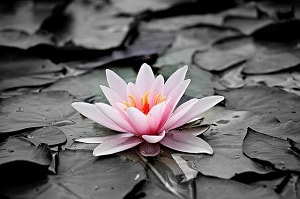
Acupuncture – Where? When? And How?
Over the past 50 years, Acupuncture has slowly risen in popularity around the world as a vast amount of research has shown its effectiveness. But you may have heard about Acupuncture from your nan’s hip pain or to help your auntie’s menopause. However, What is Acupuncture? And where did it come from?
The popularity of Acupuncture since the start of Ancient China has been a rocky one with its reputation being accepted and rejected over multiple periods in history. Developed over the course of at least 2000 years, Acupuncture has been used as part of a bigger system of healing, Chinese Medicine. It can be used alongside other techniques such as Moxibustion, Cupping, and Gua Sha (to name a few). The first major news of this therapy within our lifetimes was when a journalist named James Reston, who accompanied President Nixon to China in 1971, wrote an article about his experience in a Chinese Hospital when he got treated for Acute Appendicitis. After the operation Reston was amazed at how quickly the post-op. pain disappeared with Acupuncture. [1] Since then, Acupuncture slowly gained more steam in both public acceptance and with the medical circle. The science of Acupuncture is still ongoing with many different theories trying to describe how a needle heals the body. A lot of the evidence shows that there is an interaction with the central nervous system during the treatment. [2]
As a whole, the methods used in Chinese Medicine use the same foundations when it comes to healing the body and those are: Clearing blocked energy channels, strengthening any weaknesses in the body, and harmonising any channels that are not functioning properly. [3]
Within a typical Acupuncture treatment, the practitioner will insert very thin and flexible needles in the arms, legs, belly, and sometimes the scalp, which then helps to heal the body or at least ease the discomfort/pain. The real magic happens when the practitioner activates the point where you should feel a dull, heavy, or a strange sensation around the needled spot. This sensation where the needles are “talking” with the body. Once all the needles are inserted, the practitioner will make sure you are comfortable and will leave the needles in for about 20-40 minutes. At this point, you can even take a nap, meditate, or let your mind wander.
To get the most out of each treatment, the post-care after the session is also important. No alcohol 24 hours before and after a treatment, sleep the best you can, and drink plenty of water is recommended. Even better, gentle yoga/qigong or even walks in nature will help the healing process.
Whether you have an acute pain or a long standing issue, acupuncture will always be there for you as this is perfect for ‘me time’ in your busy schedule.
Maybe it is time to give Acupuncture a try?
Source:
[1] Reston, J. (1971) Now, about my operation in Peking, The New York Times. Available at: https://www.nytimes.com/1971/07/26/archives/now-about-my-operation-in-peking-now-let-me-tell-you-about-my.html
[2] Koppelman, M.H. (2022) Acupuncture: An overview of scientific evidence, Evidence Based Acupuncture. Available at: https://www.evidencebasedacupuncture.org/acupuncture-scientific-evidence/
[3] About acupuncture, (2023) BAcC. Available at: https://acupuncture.org.uk/about-acupuncture/
